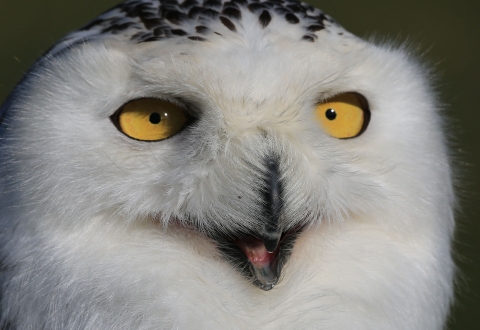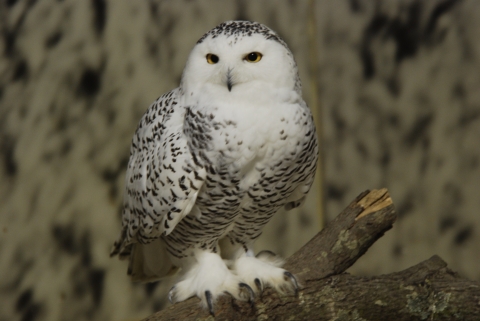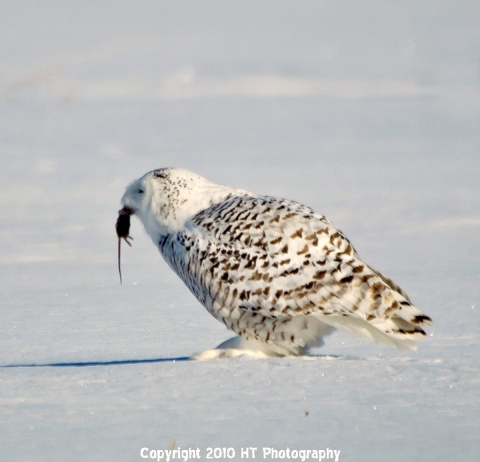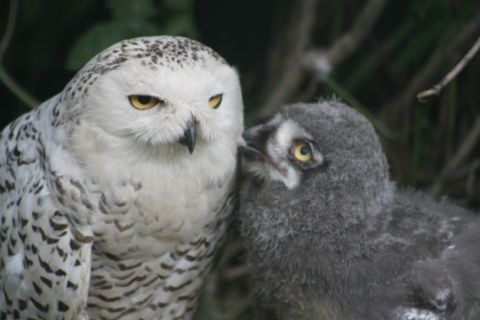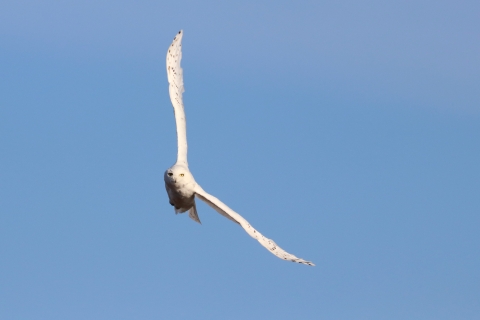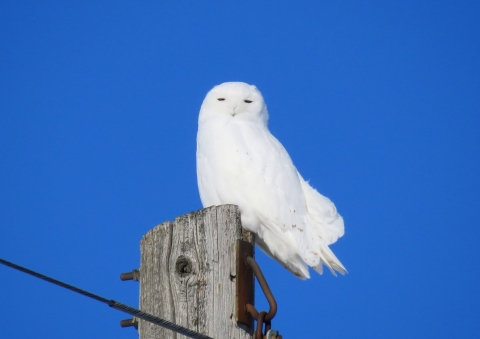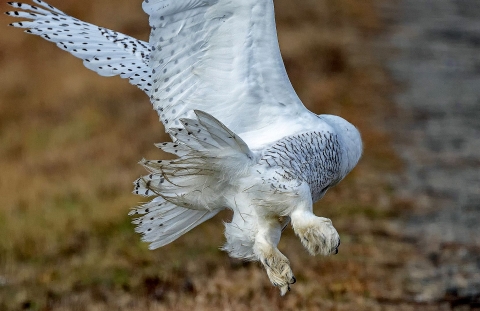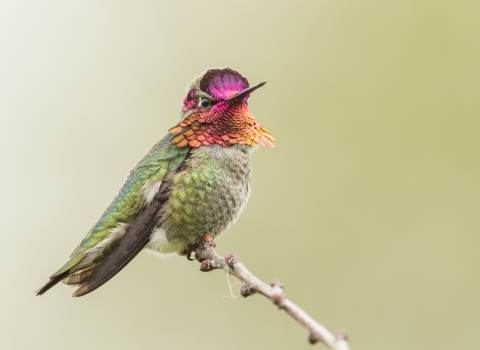It's that time of year again, when birders and wildlife enthusiasts hope to catch a magical glimpse of a snowy owl. Historically the birds travel southward (well outside their normal range) every four years or so. This is called an irruption. But, for many reasons, not all understood, snowies have been "irrupting" more often, and some predict another banner year for Southern sightings. We figured people might start talking about snowies as sightings increase, and wanted to equip you with some interesting facts to share.
Bristles on their beaks help them sense nearby objects. The beak (nearly covered by facial feathers) is hooked and used for gripping prey and tearing flesh.
Needing insulation from Arctic temperatures, snowy owls have a lot of feathers. This makes them one of the heaviest owl species in North America.
Their feet are covered with feathers, like fluffy slippers. This provides ample insulation for the cold Arctic climate.
They swallow small prey whole. Snowy owls will eat a variety of food including lemmings, Arctic hares, mice, ducks and seabirds.
Females remain with the young, males bring the food and then females feed it to the owlets.
Their wingspan is 4-5 feet on average. These powerful wings help them silently sneak up on or accelerate after prey.
Male snowy owls are almost completely white, while females are white with dark bars on her otherwise white plumage.
The Arctic summer forces snowy owls to hunt by daylight. Unlike most owls that are nocturnal, snowy owls are diurnal.
What to do if you see a snowy owl:
- Keep a safe distance to observe quietly.
- Do not play bird calls from your phone or other device.
- Don't feed the owls.
- Avoid flashes when taking photos.
- Keep noises to a minimum.
- If you find an injured owl: contact your state wildlife agency or local rehabilitator.
- If you find a dead owl: contact your state wildlife agency.
This story is part of our Open Spaces blog.

